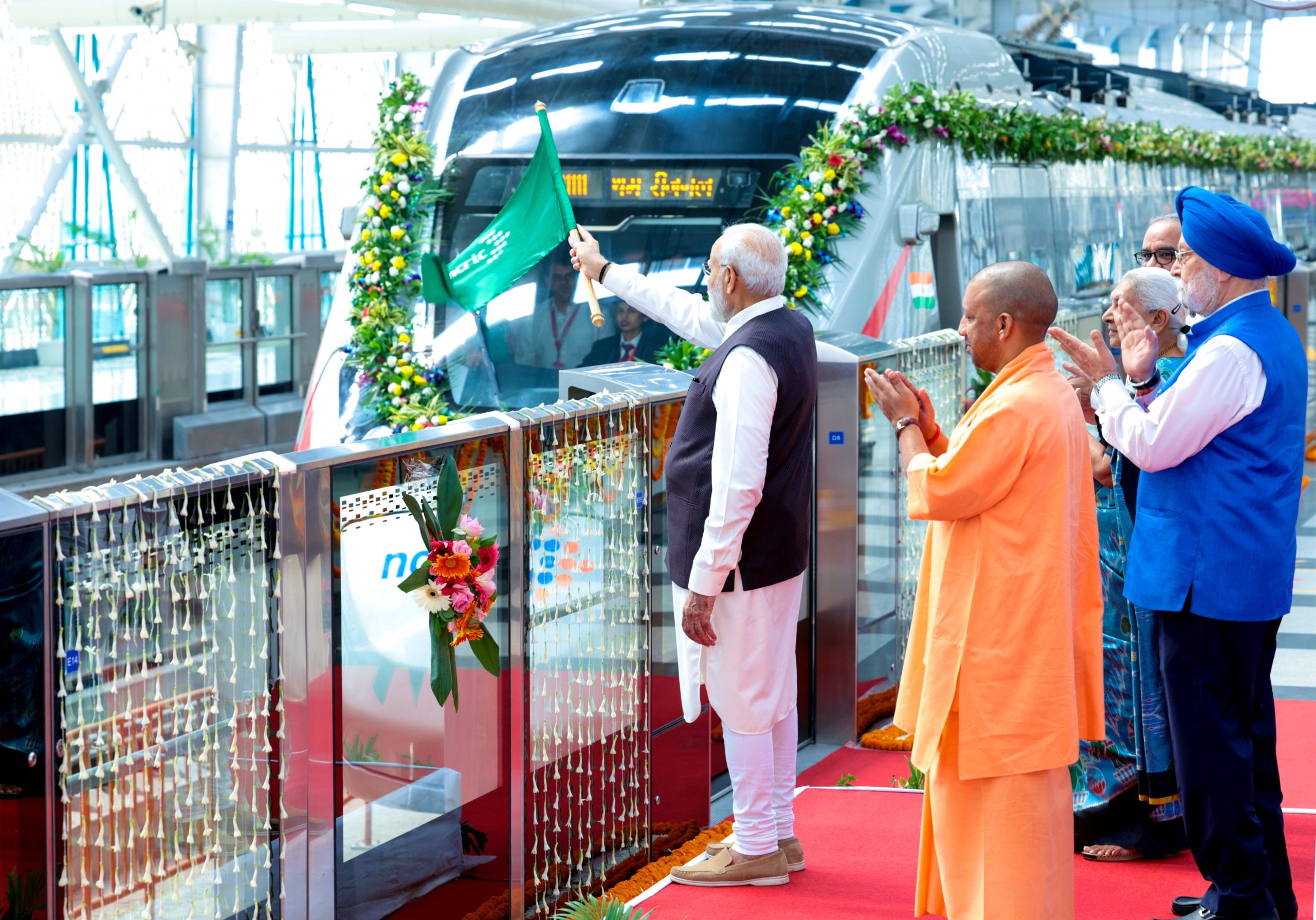 The Prime Minister of India Narendra Modi has officially inaugurated the first 17 km section of Delhi – Meerut RRTS corridor between Sahibabad in Ghaziabad City and Duhai, The service, branded as RapidX , is designed to carry around 800,000 passengers a day at full capacity which is a similar number to Hamburg’s S-Bahn.
The Prime Minister of India Narendra Modi has officially inaugurated the first 17 km section of Delhi – Meerut RRTS corridor between Sahibabad in Ghaziabad City and Duhai, The service, branded as RapidX , is designed to carry around 800,000 passengers a day at full capacity which is a similar number to Hamburg’s S-Bahn.
The ceremony was held at Sahibabad RapidX station in Ghaziabad, Uttar Pradesh, on October 20, 2023, when the Prime Minister flagged off the Namo Bharat RapidX train.
“This is a historic moment for the nation as India’s first rapid rail service, the Namo Bharat Train being dedicated to the people. We laid the foundation stone for Delhi – Meerut RRTS corridor four years ago and marked its operation today on the Sahibabad to Duhai Depot section,” Narendra Modi said.
The regional rapid transit system is designed to allow trains to run at 160 km/h – the fastest regional rail system in India – at a high frequency from 5 to 10 minutes, providing convenient and modern services which will increase rail transport attractivity. The RRTS system being built by the National Capital Region Transport Corporation (NCRTC) will cover 82 km and include 25 stations and two depots connecting Delhi, Ghaziabad, and Meerut once it is fully commissioned by 2025.
DB International Operations is responsible for operations and maintenance of the railway corridor between Delhi, Ghaziabad, and Meerut under a 12-year contract awarded in July 2022. Following the signing, DB RRTS Operations India Private Limited was established as the operating company for the project. Since then, the company has been training drivers and station staff, organizing the depots and drawing up schedules. It has gradually made the trains, stations, and other facilities ready for operation.
“The Team NCRTC has been working persistently for the past four years, to make this transformative system a reality. The inauguration of this flagship project by the Prime Minister of India, will begin a new chapter for the rail-based transport system in our country. Along with our operation partner DB RRTS India, we are committed to set a new benchmark in providing quality services to our commuters.” Vinay Kumar Singh, the Managing Director of NCRTC said.
At the beginning of 2021, works have been launched for the construction of the first section of Delhi – Ghaziabad – Meerut rail corridor. Alstom was awarded the signalling, train control and telecommunication system contract and is responsible including for the deployment of ETCS hybrid Level 3, a combination of ETCS Level 2 with shorter virtual section normally used in ETCS Level 3 for even higher performance. Alstom also has won the EUR 314 million contract for the supply of 30 six-car commuter trains and 10 three-car intracity mass transit units. The critical components for these trains are delivered by Wabtec.
In addition, Nokia – Alstom partnership has been also working for the deploy of a 4.9G/LTE private wireless network that supports the ETCS L 2 system.
The network is planned and spatially oriented to ensure seamless integration with the Indian Railways, Inter State Bus Terminals (ISBTs), Airports and the Delhi Metro. Inidia is investing around USD 4 billion in the project, which is primarily aimed at commuters traveling between the three major cities, each with populations of over one million.
In addition, the new system will bring benefits for the development of the regions through increased connectivity between large centres of economic activity and small cities.
The entire system has been identified to be developed through eight corridors. The first phase of RRTS, which has been declared the priority phase, includes three main sections on Delhi – Ghaziabad – Meerut, Delhi – Gurugram – SNB – Alwar and Delhi – Panipat routes.
Part of the 82 km Delhi – Ghaziabad – Meerut will run parallel with Meerut – RRTS Line which are connected by four stations (from Meerut South station to Modipuram station).
The Delhi – Gurugram – SNB – Alwar corridor will start at Sarai Kale Khan station, crossing Munirka and Aerocity, towards via Gurugram, Sotanala and Rewari to reach Alwar in Rajasthan on a partial elevated and underground line. This 164 km line of the RTTS system with 22 stations will pass through industrialised areas of Haryana and Rajasthan. This corridor aims to connect Delhi and small towns in the state of Haryana providing access to educational and health services and institutions.
The other five routes include:
- Delhi – Faridabad – Ballabgarh – Palwal;
- Ghaziabad – Khurja;
- Delhi – Bahadurgarh – Rohtak;
- Ghaziabad – Hapur;
- Delhi – Shahadra – Baraut
Share on:






